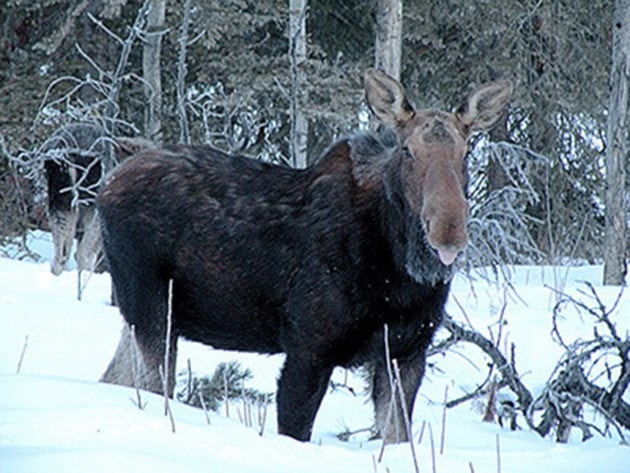Gaven Crites - 100 Mile House Free Press
The provincial government recently launched an investigation into what's causing significant moose population declines in the British Columbia Interior.
The five-year study will monitor five zones that range from the Fort St. James area in the North to the Kamloops area in the South – Bonaparte, Big Creek, Entiako, Prince George South and John Prince Research Forest.
The investigation will consider forestry-related changes to the landscape, climate, parasites, diseases, and pressure from hunting and predators, and any connection these factors have with respect to what's happening to the animals, and how to bring them back.
Jesse Zeman, a director with the B.C. Wildlife Federation (BCWL), says it's good to see the government investing in wildlife management.
He adds the decline in moose numbers in this part of the province has been “huge.”
“In the Thompson, Cariboo and Omineca – that's where we've seen the most significant decline. Of course, those are the areas where we've had extensive salvage and pine beetle logging.
“We know where we've had salvage logging we've had significant moose population declines. What the relationship is between logging and moose population declines, we don't know. That's what we have to find out.”
The most current estimate for B.C.'s moose population – 145,000 to 235,000 – is from 2011. The government says that estimate will be updated this summer.
According to data provided by the BCWF, the number of moose taken by hunters in the Cariboo Region has dropped by close to two-thirds in the past 30 years – from 2,921 in 1980 to 964 in 2011. Throughout the province, close to 75,000 people apply for a moose tag annually, but only about 10,000 receive tags. Of those, about 6,000 hunters will take an animal. Thirty years ago, resident hunters were harvesting about 13,000 annually.
The drop in hunting numbers means declines in overall revenue generated from hunting and hunting-related expenditures for many communities in rural B.C., Zeman explains.
“Sustainability is the key. If the [moose] population is trending downward, then opportunities for hunters trends down with that.
“Probably one-third of the hunter population lives either on Vancouver Island or in the Lower Mainland. So, those are people who would historically have come up to the Cariboo to go hunting. There's an income redistribution that happens throughout the Cariboo that now doesn't occur as much.”
The study, which includes 11 wildlife biologists, a wildlife veterinarian and other staff, will see the movement of more than 200 radio-collared moose tracked and their mortalities investigated to determine a cause of death.
There is the possibility of adding three more areas to the study as the work progresses.
In a news release, the Ministry of Forests, Lands and Natural Resource Operations states the goal for moose management is to ensure populations are sustainable, integral to natural ecosystems throughout their range, and able to meet the needs of First Nations, licensed hunters and the guiding industry.
